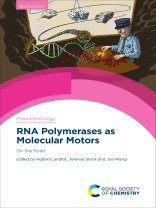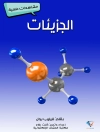To thrive, every living cell must continuously gauge and respond to changes in its environment. These changes are ultimately implemented by modulating gene expression, a process that relies on transcription by Nature’s most multivalent molecular machine, the RNA polymerase. This book covers progress made over the past decade understanding how this machine functions to compute the cellular state, from the atomistic structural level responsible for chemistry to the integrative lev...
İçerik tablosu
The Transition from Transcription Initiation to Transcription Elongation: Start Site Selection, Initial Transcription, and Promoter Escape;
Molecular Basis for Tr...
Bu e-kitabı satın alın ve 1 tane daha ÜCRETSİZ kazanın!
Dil İngilizce ● Biçim EPUB ● ISBN 9781839160660 ● Dosya boyutu 13.8 MB ● Editör Robert Landick & Terence Strick ● Yayımcı RSC ● Ülke GB ● Yayınlanan 2021 ● Baskı 2 ● İndirilebilir 24 aylar ● Döviz EUR ● Kimlik 8234256 ● Kopya koruma Adobe DRM
DRM özellikli bir e-kitap okuyucu gerektirir












